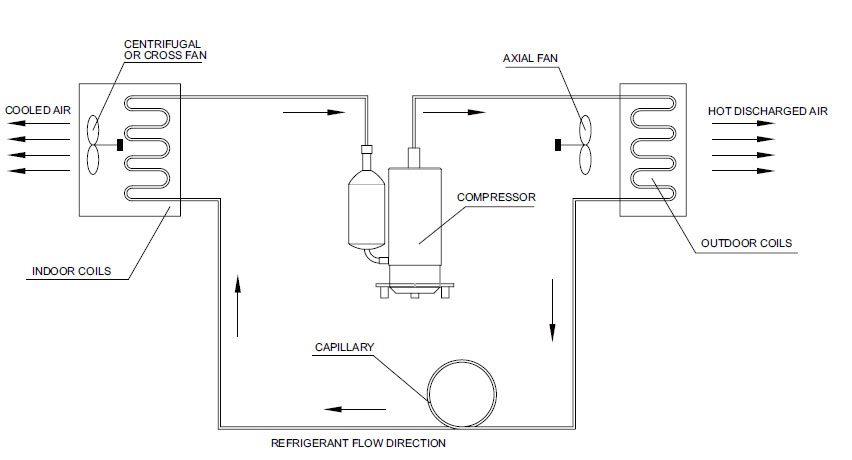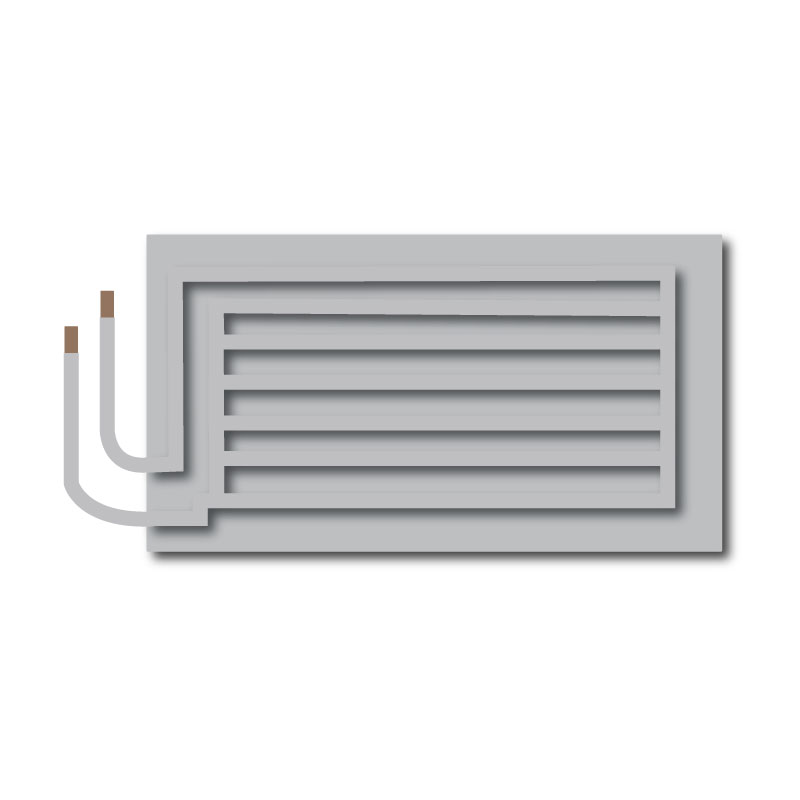A refrigerator is an invention that the modern world will struggle without. Not only does it make food preservation easier, it also gives us access to a cold and refreshing drink when we feel like it. Some may think of their fridge like a buzzing and whirring magic portal that makes things cold after a few minutes. This begs the question: how does a refrigerator work anyway?
Refrigerators work by continuously evaporating and condensing a refrigerant gas along the pipes embedded inside it. As this gas evaporates, it absorbs the heat from the fridge’s compartments, and thus making a cold environment.
Read on to get a more in-depth explanation of the refrigeration cycle and the parts responsible for it. I will also explain the different methods that refrigerators use this distribute this cold air.
The purpose of refrigeration
All foods contain mostly harmless beneficial “gut bacteria”. Some foods, like yogurt and bread, are literally made out of bacteria (lactobacillus and yeast). When these bacteria grow too fast, they will cause food spoilage.
The basic idea behind refrigeration is to slow down the process of decomposition by slowing down the growth of bacteria in our food. The refrigerator does this by providing a consistent low-temperature environment, and it does this using the power of evaporation.
A common misconception about how refrigerators work is that they blow cold air into their compartments to bring the temperature down. What they actually do is take the heat out of the air inside and transfer it outside.
When a liquid evaporates in to the air, it absorbs heat. This is why your skin feels cold after rubbing your hands with alcohol. This is also why we sweat when our body temperature gets too hot. A refrigerator works by harnessing the power of evaporation to cool down its interior, but makes it so that the resulting vapor won’t escape. Instead, it gets reverted back to its liquid form to start the cycle all over again.
The refrigeration cycle

The refrigeration cycle is deceivingly simple – it only requires four main parts to achieve it. The cycle goes like this:

Compressor
It all starts with the compressor. This part is known as the heart of the refrigerator. The compressor increases the pressure and the temperature of the refrigerant gas, and pumps it into the condenser.

Condenser
The condenser is the set of coils located at the back of the fridge. Its job is to condense the hot high-pressure refrigerant gas from the compressor into its liquid form. This liquid is then pumped into the expansion valve.

Expansion Valve
Also known as the capillary tube, this part greatly reduces the pressure of the liquid refrigerant, thus bringing its boiling point down.

Evaporator
The low pressure liquid is passed along the evaporator coils where – you guessed it – it will gradually evaporate. After this, the low pressure liquid is cycled back to the compressor where the cycle will start all over again.
Why does a refrigerator start and stop during the day?
You may have noticed that some refrigerator start and stop during the day. This is because an internal thermostat regulates the refrigeration cycle. When the fridge gets too cold, it switches the compressor off, and when it gets too warm, it turns it on again.
Non-inverter refrigerators are like this, as their compressors cannot operate in variable speeds. Since starting up the compressor makes the most noise and needs a lot of energy, this makes them noisy and inefficient. Meanwhile inverter refrigerators do not turn the compressor off when it reaches the desired temperature. Instead, it keeps the compressor running at a slower pace to maintain the temperature. This makes them quieter and more efficient.
Types of refrigerant gases
If the compressor is the heart of the fridge, then the refrigerant gas is its blood. This is the gas that gets evaporated and condensed to cool down our fridges.
There are many kinds of refrigerant gases in use today for refrigerators, air conditioners, and other commercial applications. Each one of them have different properties. Back in the day, the most common refrigerant gas was Freon (R-12). However, Freon is a CFC (chlorofluorocarbons) that damages the ozone layer. Freon has been phased out in lieu of more environment-friendly refrigerants because of this.
The most common refrigerant gasses in use in refrigerators today is R-134a and R-600a. To briefly put it, R-600a has less impact on the environment and is generally more efficient vs. the R-134a gas. However, one of the drawbacks of the R-600a gas is that it is flammable and it can cause minor health concerns when it escapes from the refrigerator. I’ve made a deeper comparison between these gases in a separate article. Go check it out!
Types of cooling systems
While all refrigerators create cold air the same way, they differ in how they distribute this cold air throughout their compartments. This is why fridges are categorized by the cooling system they use, namely: direct cool (used interchangeably with manual defrost) and no frost (otherwise known as fan cooling).
Put simply, a direct cool refrigerator, as the name implies, uses its evaporator coil to cool the air directly. Meanwhile, a no frost refrigerator also uses the evaporator to cool the air, but it has fans to help distribute the cold air evenly throughout its compartments. If you want to delve deeper into this topic, I’ve written a comparison between these two types of cooling systems in a separate article.
Conclusion
While most people can go about their lives not knowing how a refrigerator works, it can be worthwhile to study. Knowing so will provide you with information to make better decisions when buying for a new refrigerator. It can also help you improve its performance to get more from it – or at the very least, not break your fridge.

Miguel Mores worked for 5 years as a member of the product management team for a home appliance company in the Philippines. He started 101appliance to answer the most common customer questions that he has encountered during his time in the industry. He now works in the digital marketing field and manages a small online bookstore on the side.


If we talk about home appliances so the first thing that comes to the minds is “Refrigerator.” And that is the reason why top leading consumer goods manufacturing brands like Dawlance, SG, PEL and Haier work dedicatedly to offer high tech refrigerators that are able to meet the needs of the modern kitchen. A modern kitchen is absolutely incomplete without a sleek, innovative and durable fridge. The presence of an innovative, high-tech, and sleek refrigerator in your kitchen speaks volumes of your choices in life.
There is no doubt that a refrigerator that comes with advanced technology and amazing features can truly be a great addition to your kitchen. modern-day refrigerators do more than just preserving edibles and providing you perfect solid ice cubes. Over the last few decades, we have witnessed great innovation in the manufacturing of refrigerators. Some of the latest features like WiFi connectivity, touch-screen panels voice command control and instant cube makers are simply remarkable.
Thanks for the detailed reply